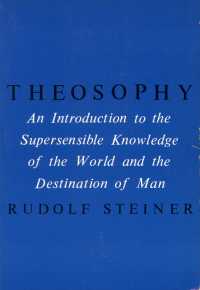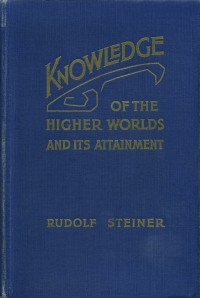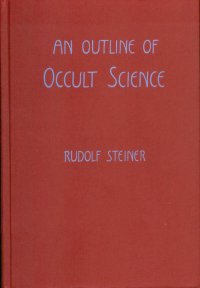Essential Reading
Knowledge of Steiner's basic teachings is essential to practice his esoteric exercises and meditations. While reciting a verse or performing an exercise may provide some benefit without such knowledge, Steiner's students who first received these practices already had a solid understanding of his core teachings pertaining to esoteric development. Thus, we must once again emphasize the importance of reading Steiner's five basic books. Rudolf Steiner intended these carefully written volumes to serve as a foundation to all of the later, more advanced anthroposophical writings and lecture courses.
Since these five volumes could take a lifetime to master, we have outlined some essential readings which provide an initial basis for further practice and ongoing study. Without this understanding, the practitioner of the exercises may neither understand what they are attempting to accomplish nor how or why they are even attempting to do so.

Theosophy (1904)
Theosophy begins by describing the threefold nature of the human being: the body, or sense-world; the soul, or inner world; and the spirit, or universal world of cosmic archetypes. The book closes with an outline of the path to higher knowledge. These are essential reading to begin one's practice. You may, however, wish to also read the other chapters on reincarnation and karma (Re-embodiment of the Spirit and Destiny) as well as a description of the soul's journey through regions of the supersensible world after death (The Three Worlds).
- The Essential Nature of Man
- Re-embodiment of the Spirit and Destiny
- The Three Worlds
- The Path of Knowledge

How to Know Higher Worlds (1904)
Rudolf Steiner's fundamental work on the path to higher knowledge explains in detail the exercises and disciplines a student must pursue in order to attain a wakeful experience of supersensible realities. The path described here is a safe one which will not interfere with the student's ability to lead a normal outer life. This book suggests the possibility of a modern person consciously developing sufficient skills of concentration, empathy, etc. to be able to obtain first-hand knowledge of spiritual realities.
At a minimum, a serious student should read the first five chapters before beginning a practice.- How is Knowledge Of The Higher Worlds Attained?
- The Stages of Initiation
- Some Practical Aspects
- The Conditions of Esoteric Training
- Some Results of Initiation
Occult Science (1910)

As with the other works of Rudolf Steiner, it is difficult to identify selected readings from An Outline of Esoteric Science (aka Occult Science that are more important for a practitioner than others. At a minimum, however, one should understand:
- what is meant by the term "esoteric or occult science"
See Chapter 1 — The Character of Occult Science - the structure and makeup of the human being
See Chapter 2 — The Essential Nature of Mankind - what is meant by "initiation" and "the higher worlds" as well as the training a student must undertake to become an initiate
See Chapter 5 — Cognition of the Higher Worlds — Initiation
While these topics are covered in the prior selected readings, one would be advised to read this volume as well. Steiner expounds upon his prior works. This work can be daunting since it is nearly 400 pages. In addition to the above, Steiner sets forth a discussion of dreams, sleep, death, life between death and rebirth, and reincarnation. In the fourth chapter evolution is described from the perspective of initiation science. The sixth and seventh chapters consider the future evolution of the world and more detailed observations regarding supersensible realities.

